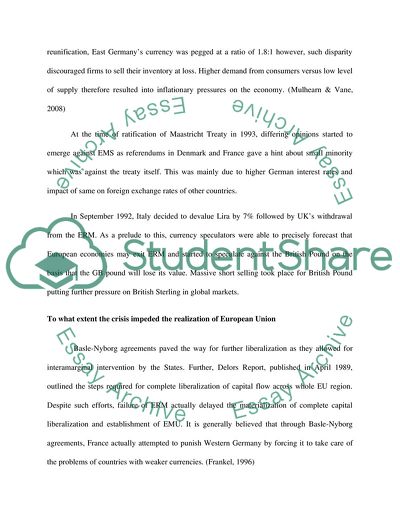Cite this document
(European Monetary System Term Paper Example | Topics and Well Written Essays - 2000 words, n.d.)
European Monetary System Term Paper Example | Topics and Well Written Essays - 2000 words. Retrieved from https://studentshare.org/macro-microeconomics/1761625-to-what-extent-the-european-monetary-system-ems-1992-93-crisis-impeded-the-realization-of-the-european-monetary-union-emu-what-lessons-can-be-drawn-for-the-current-emu-debt-crisis
European Monetary System Term Paper Example | Topics and Well Written Essays - 2000 words. Retrieved from https://studentshare.org/macro-microeconomics/1761625-to-what-extent-the-european-monetary-system-ems-1992-93-crisis-impeded-the-realization-of-the-european-monetary-union-emu-what-lessons-can-be-drawn-for-the-current-emu-debt-crisis
(European Monetary System Term Paper Example | Topics and Well Written Essays - 2000 Words)
European Monetary System Term Paper Example | Topics and Well Written Essays - 2000 Words. https://studentshare.org/macro-microeconomics/1761625-to-what-extent-the-european-monetary-system-ems-1992-93-crisis-impeded-the-realization-of-the-european-monetary-union-emu-what-lessons-can-be-drawn-for-the-current-emu-debt-crisis.
European Monetary System Term Paper Example | Topics and Well Written Essays - 2000 Words. https://studentshare.org/macro-microeconomics/1761625-to-what-extent-the-european-monetary-system-ems-1992-93-crisis-impeded-the-realization-of-the-european-monetary-union-emu-what-lessons-can-be-drawn-for-the-current-emu-debt-crisis.
“European Monetary System Term Paper Example | Topics and Well Written Essays - 2000 Words”. https://studentshare.org/macro-microeconomics/1761625-to-what-extent-the-european-monetary-system-ems-1992-93-crisis-impeded-the-realization-of-the-european-monetary-union-emu-what-lessons-can-be-drawn-for-the-current-emu-debt-crisis.


